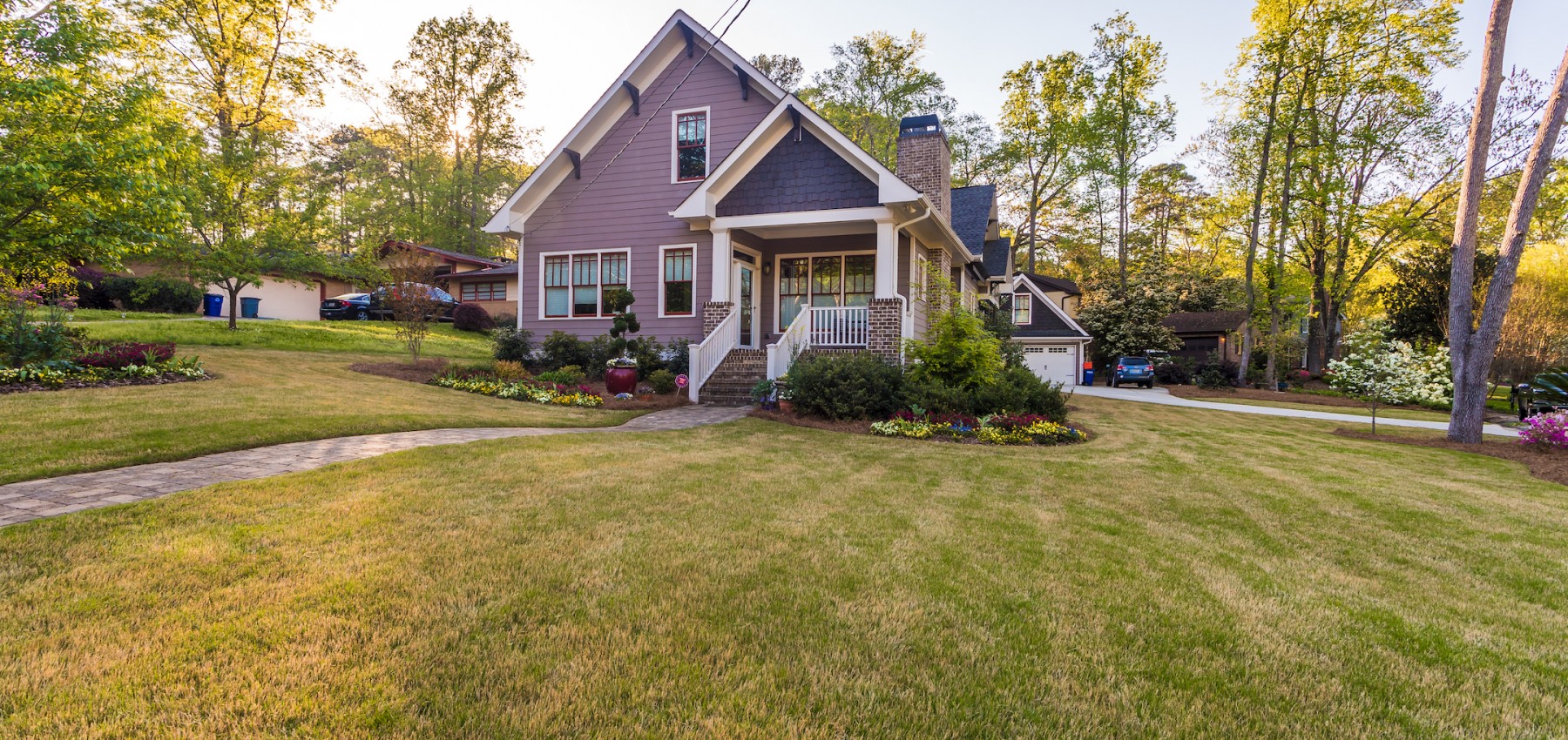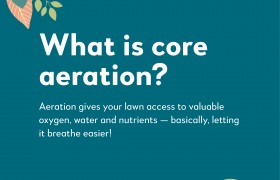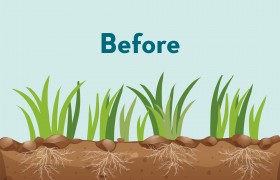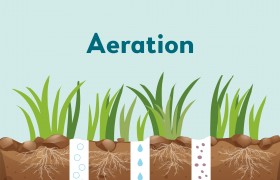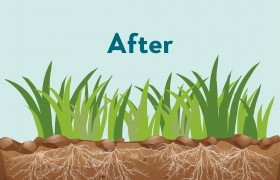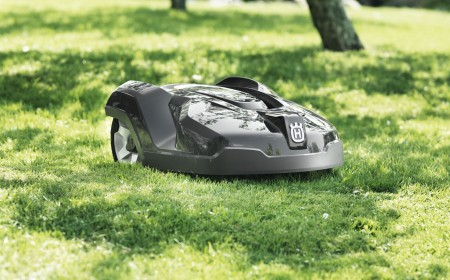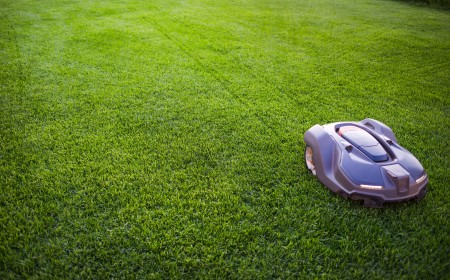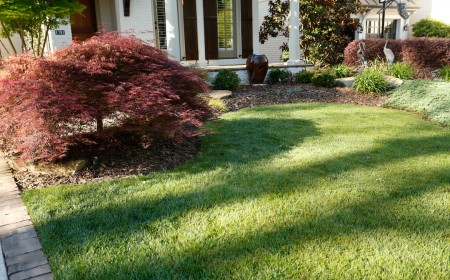It’s been said, “the grass is always greener on the other side of the fence” — but with proper maintenance, the lawn on the “other side of the fence” will be yours.
Grass is delicate. In order to stand up to hours of barefoot traffic and the heat of the blazing sun, your lawn needs a maintenance plan that includes procedures like aeration, dethatching and overseeding.
These three jobs aren’t difficult but they can be time-consuming and technical if you’ve never cared for a lawn before.
Here are the basics from our Property Care team to help you get started!
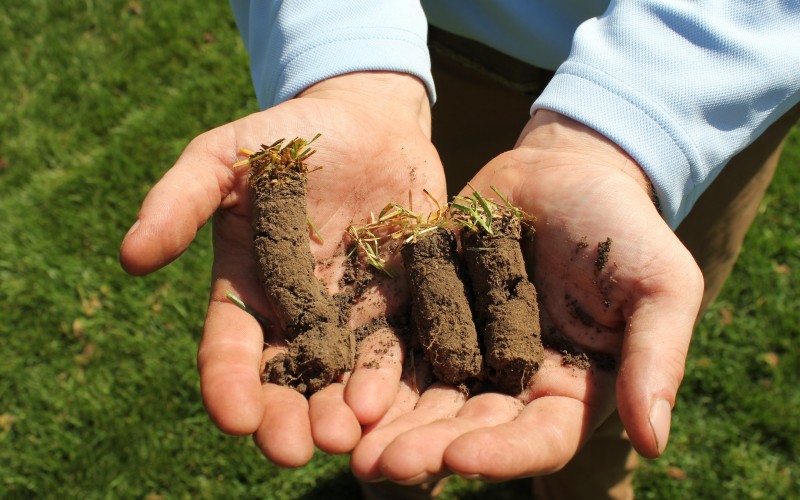
Loosen up with core aeration.
The best way to get that dark, green golf-course color you crave is to loosen the soil by aerating your lawn and allowing it to breathe.
This involves poking holes in the turf by a machine with small tines every two or three inches and removing the plugs. It sounds (and looks) a little weird, but don’t worry. Your lawn will love you for it!
Aeration reduces soil compaction, allows nutrients and water to get at the roots and releases harmful gases that may have become trapped in the soil. It also leaves room for fertilizer and lime treatments, which can change the pH level in the soil to promote growth.
Breathe easy with dethatching.
If you don’t regularly remove thatch (dead grass and other debris) from your lawn it can build up over time leaving your grass weak, pale and gasping for air.
While some thatch is okay — it keeps the soil moist, supplies nutrients and provides insulation from the heat — having more than an inch can cause problems for your lawn. (If you do regular core aeration, you may not need to dethatch. Best to check with an expert if you’re unsure!)
Heavy thatch prevents water and oxygen from getting to the roots and can be a breeding ground for insects and other disease-causing organisms. The only way to get rid of excess thatch is with a stiff rake and some good old-fashioned elbow grease!
If you have warm-season grass, such as Zoysia, Bermuda and St. Augustine grass, dethatching should be done in the summer, in their peak growing season. Cool-season grasses, such as Kentucky Bluegrass, can be dethatched in the spring, late summer or fall when they’re actively growing.
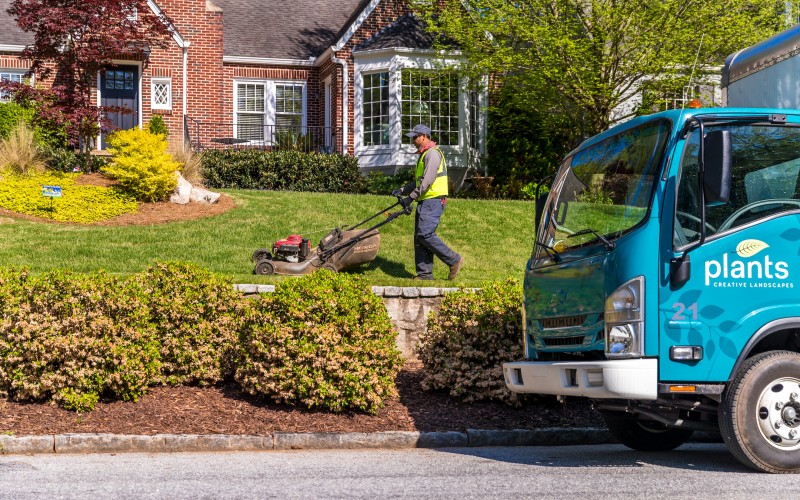
Replenish with fescue (cool-season lawn) overseeding.
If you have cool-season fescue grass, age, disease and general wear and tear can leave your lawn thin and bare — allowing weeds to move in and fill in the bare spots.
To keep your lawn healthy, vigorous and looking its best, you need to overseed it on a regular basis. Overseeding is just what it sounds like — broadcasting new seed over your existing lawn.
There’s no advantage to overseeding warm-season lawns.
Other lawn care tips for a perfect lawn.
Mowing
In addition to seasonal maintenance, the best thing you can do for your lawn is mow, mow, mow! Keeping your lawn at a uniform level with regular mowing allows nutrients to penetrate the soil and keeps your grass strong and healthy.
And the best way to do that — without having to mow the grass every few days — is with an Husqvarna Automower (we call ours Billy).
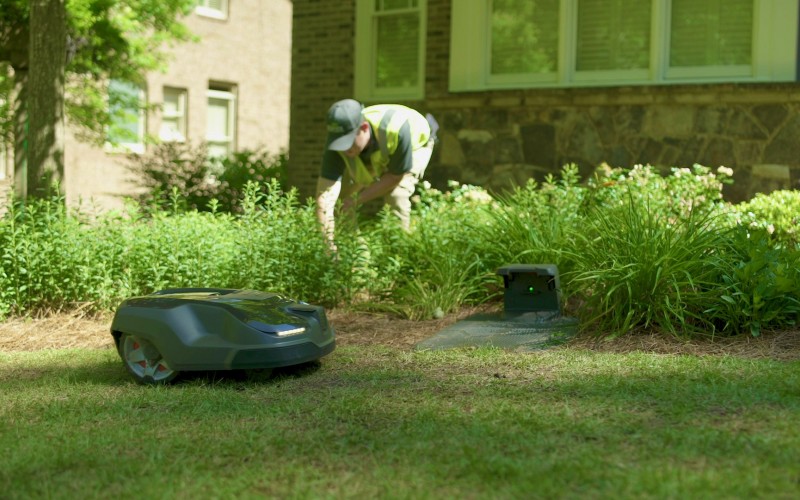
Watering
Your lawn needs about an inch of water per week for the water to reach its roots so it can stay green and healthy.
If you’re not interested in running out with the hose every week (or more often if it’s hot and dry), you should consider installing a Hydrate Smart Irrigation system.
You don’t have to labor over your lawn to keep it healthy.
But you do need to keep up a regular maintenance schedule, including mowing, watering, fertilizing, aerating, dethatching and overseeding.
If you want an amazing lawn — but find caring for your lawn a bit overwhelming — the team at Plants Creative is always here to help. Let’s chat!
